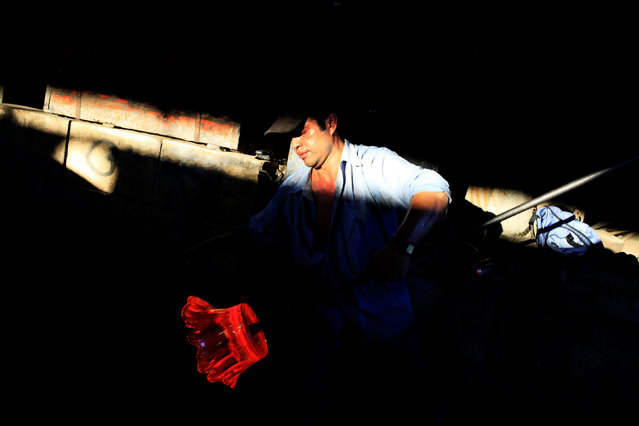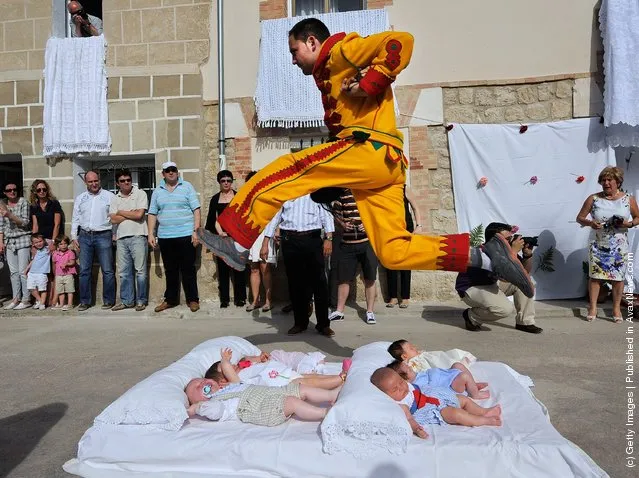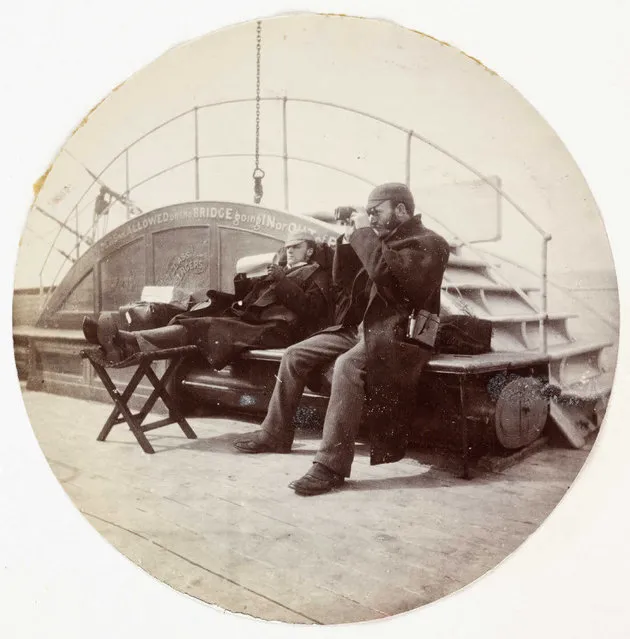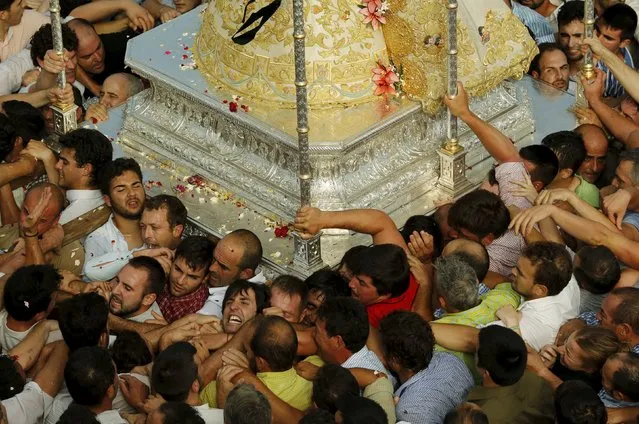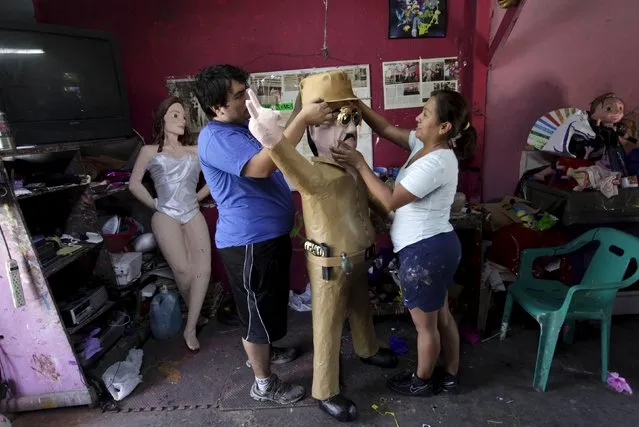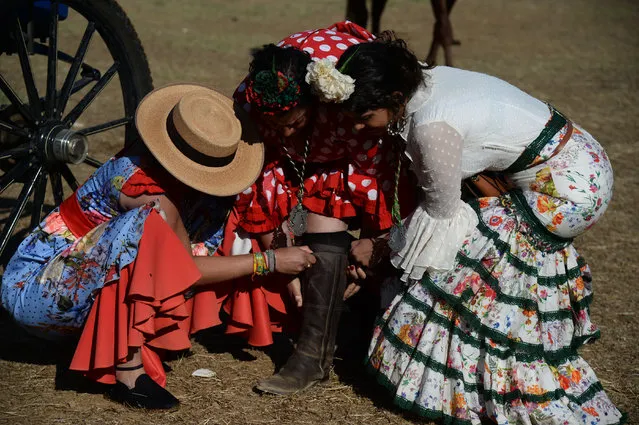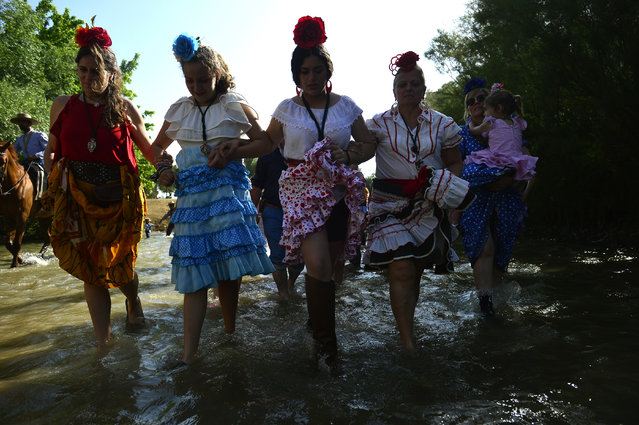
Pilgrims lift up their dresses as they cross the Quema river during the annual El Rocio pilgrimage in Villamanrique, near Sevilla on June 1, 2017. El Rocio pilgrimage is the largest in Spain with hundreds of thousands of devotees wearing traditional outfits converging in a burst of colour as they make their way on horseback and decorated carriages across the Andalusian countryside. (Photo by Cristina Quicler/AFP Photo)
05 Jun 2017 07:19:00,post received
0 comments

